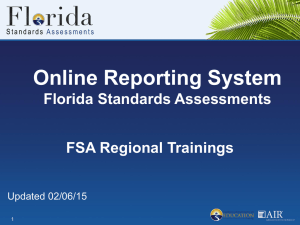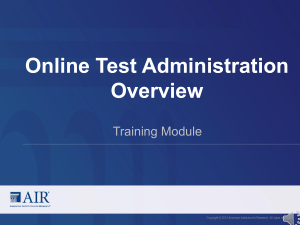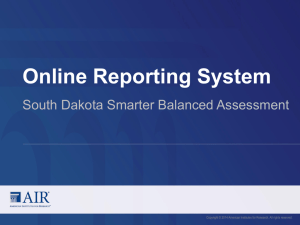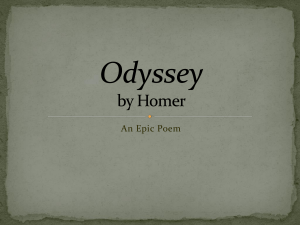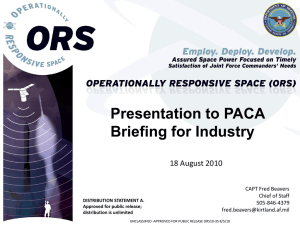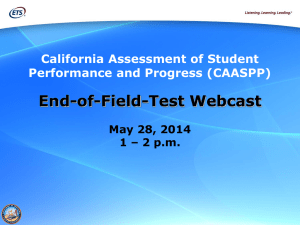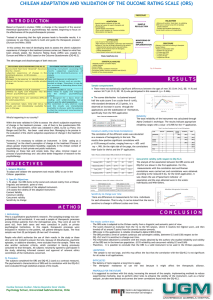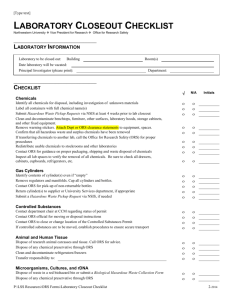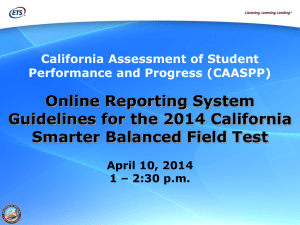Data Export After EPIC
advertisement
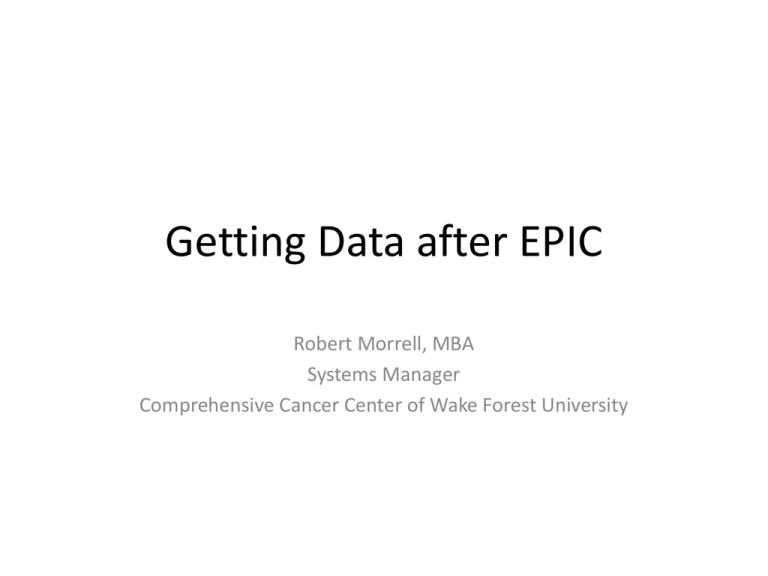
Getting Data after EPIC Robert Morrell, MBA Systems Manager Comprehensive Cancer Center of Wake Forest University The promise and the tragedy • “Meaningful use” promised better normalized data • Getting data out during/after implementation was not a priority • Support Staff often did not yet understand the new system well enough to get the data quickly Wake Health and CCCWFU • Previously used GE (Logician/Carecast) as well as IDX • Converted to EPIC September 2012 (Big Bang, not recommended) • CCCWFU had previously built snapshot mediated links between its legacy CTMS to inpatient, outpatient, labs • Numerous applications utilizing these linkages developed over 10 years Direct EPIC, Data warehouses, and Clarity • Previously we had used direct system data dumps as well as dumps from a data warehouse • Once EPIC launched there was no direct data link (yet) and the data warehouse was not initially being fed • Clarity: not a data warehouse, (Cogito is the data warehouse which we do not yet use) Things learned at great cost • EPIC data models were much more granular and getting the data became more difficult. • The old data in the EDW should be transformed to look like the new data coming in, not the reverse • Knowing EPIC does not mean you know Clarity • Clarity run schedules must re done to match your data hierarchy or there will be blood • Do not let your EDW be driven by the first or loudest report/data requests. Design, plan and implement 4 datasets, 3 methods • Outpatient schedule and inpatient census: – Clarity->Crystal reports->BOE scheduler->file on CCCWFU server->CCCWFU SQL database • Labs – Clarity->EDWS (Oracle)<->Link Server<->CCCWFU SQL database • Research Status (new) – Clarity->Reporting Work Bench->file on CCCWFU server->CCCWFU SQL database SELECT /* PARALLEL */ PE.PAT_MRN_ID mr_nbr, ors.result_time ordr_dtetime, NVL (ORP2.SPECIMN_taken_TIME, SPECIMN_taken_date) SPECIMN_taken_TIME, MAX (ors.ord_value) rslt, CC.BASE_NAME tst_rslt_cde, CC.NAME tst_rslt_desc, ors.reference_unit unit FROM CLARITY.order_results@edws2clarity ors, CLARITY.patient@edws2clarity pe, clarity_component@edws2clarity cc, clarity.order_proc_2@edws2clarity orp2, clarity.order_proc@edws2clarity orp, EDWSCUST.MORELLCANCER_MRN mm WHERE ORP.ORDER_PROC_ID = ORS.ORDER_PROC_ID AND ORP2.ORDER_PROC_ID = ORP.ORDER_PROC_ID AND ORP.pat_id = ORS.PAT_ID AND pe.pat_mrn_id = TRIM (mm.pat_mrn_id) AND PE.PAT_ID = ors.pat_id AND ors.component_id = cc.component_id AND TRUNC (ors.result_time) > TRUNC (SYSDATE - 21) GROUP BY pe.PAT_MRN_ID, ors.result_time, ORP2.SPECIMN_taken_TIME, ors.ord_value, BASE_NAME, NAME, reference_unit, SPECIMN_taken_date ORDER BY mr_nbr ASC; Used TOAD to create oracle view and table What do we do with them? • Link with Protocol Patient management systems • Source for screening systems • Event alerts (admission, lost patient coming in, pregnancy, auto graded lab AE’s etc) • Error checking and QA reviews • Missing data…. • Most output sent as email alerts or shared server files (excel) Problems • Clarity depends on very intensive overnight processing - Some processes can fail or be delayed till later in the day • Daily snapshot, not live • Use is restricted to advisory systems, we do not currently do automatic data entry • Change in database on either end (or the middle) can cause problems Going forward • Migrating towards more directly integrated systems… but will lose our flexibility to respond to problems quickly • Working backwards for error checking and filtering tools to be in EPIC itself Lessons learned • Knowing it can be done is sometimes the key to getting it done • Snapshot approach simplifies development • Shift filtering to your side to make it easier to get the data • Operational validation needed • Advisory systems suggested • Think big: envision the endpoint before the conversion or before the project starts
